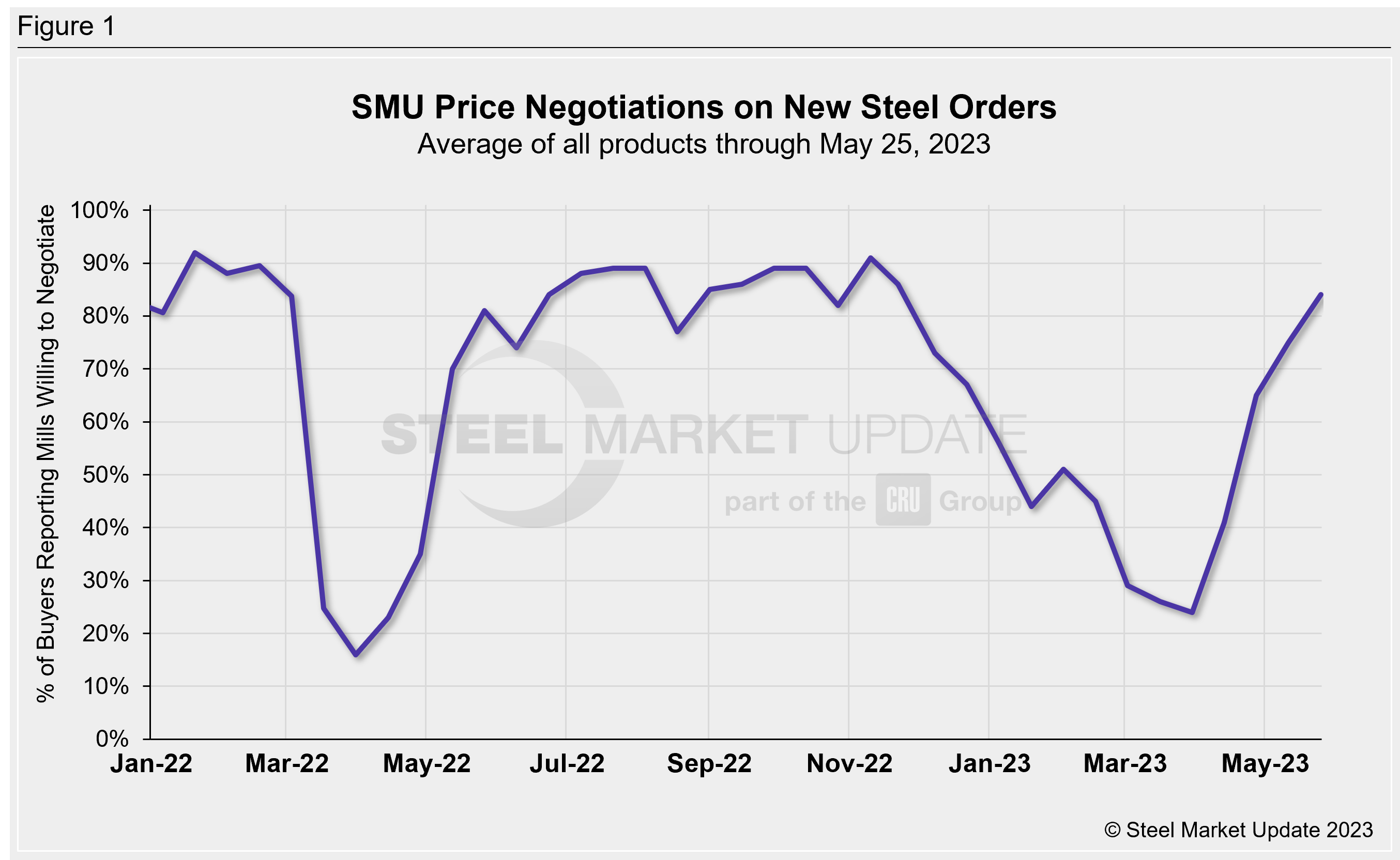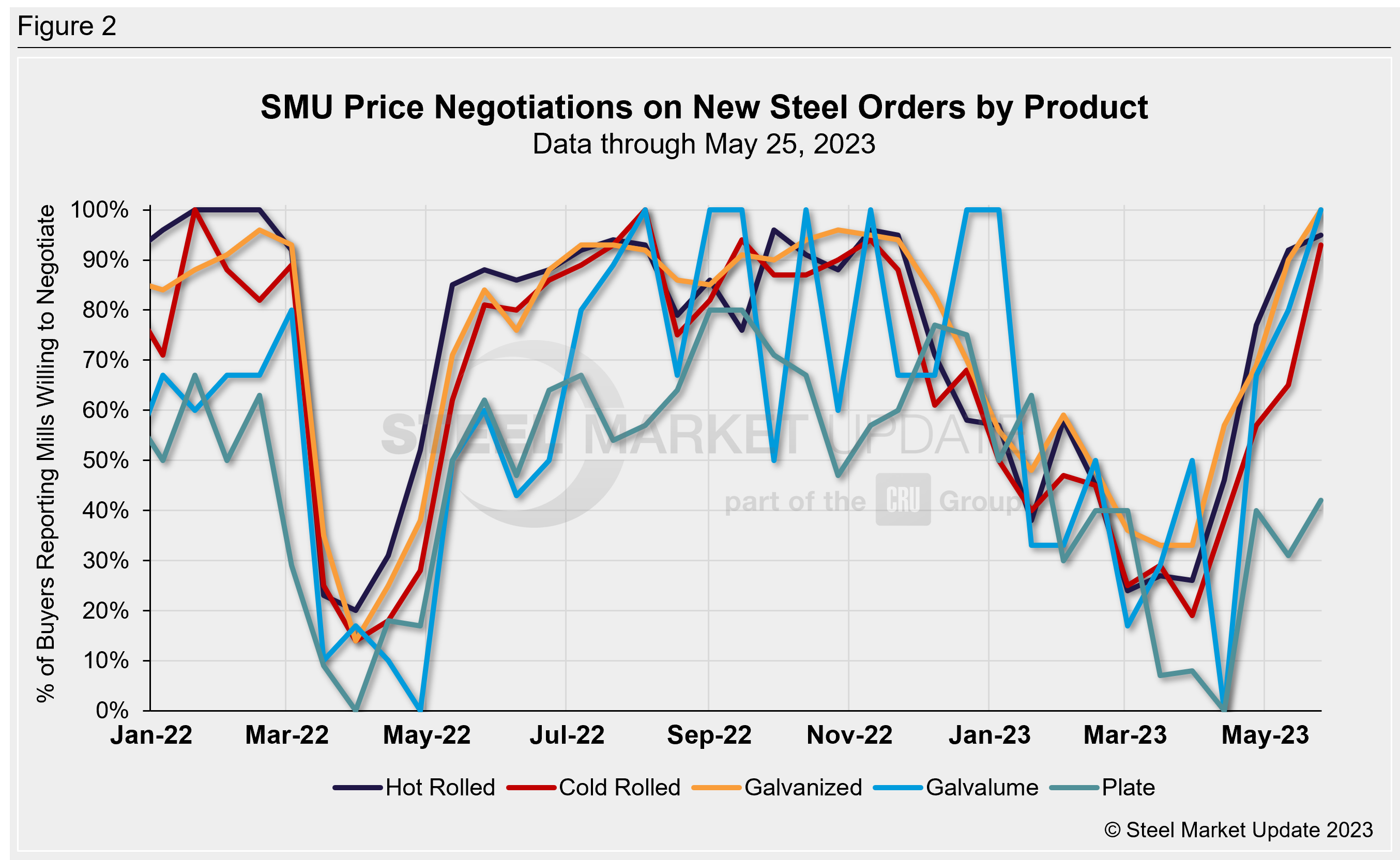SMU Data and Models

Mills Willing to Negotiate Lower Sheet Prices Across the Board
May 25, 2023
Steel buyers across all products surveyed by SMU this week are finding mills more willing to negotiate lower spot pricing vs. two weeks ago.
Galvanized saw the percentage of buyers saying mills were willing to talk price climb to 100% this week, up from 90% at the previous market check, while cold rolled rose 28 percentage points to 93% in the same comparison.
Every two weeks, SMU asks steel buyers whether domestic mills are willing to negotiate lower spot pricing on new orders. This week, 84% of steel buyers (Figure 1) across both sheet and plate markets reported mills were willing to negotiate cheaper tags on new orders, rising nine percentage points from 75% two weeks ago. The percentage has been rising consecutively since it stood at 24% at the end of March, which is the lowest reported figure so far this year.

Figure 2 below shows negotiation rates by product. Hot rolled increased three percentage points to 95% of buyers reporting mills more willing to negotiate lower prices vs. two weeks earlier; plate at 42% (+11); and Galvalume at 100% (+20). Recall that Galvalume can be more volatile because we have fewer survey participants there.

Note: SMU surveys active steel buyers every other week to gauge the willingness of their steel suppliers to negotiate pricing. The results reflect current steel demand and changing spot pricing trends. SMU provides our members with a number of ways to interact with current and historical data. To see an interactive history of our Steel Mill Negotiations data, visit our website here.
By Ethan Bernard, ethan@steelmarketupdate.com
Latest in SMU Data and Models

SMU Scrap Survey: Sentiment Indices rise
Both current and future scrap sentiment jumped this month, though survey participants reported responses before key trade news was announced.

SMU Survey: Sentiment splits, buyers have better view of future than the present
SMU’s Steel Buyers’ Sentiment Indices moved in opposite directions this week. After rebounding from a near five-year low in late June, Current Sentiment slipped again. At the same time, Future Sentiment climbed to a four-month high. Both indices continue to show optimism among buyers about their company’s chances for success, but suggest there is less confidence in that optimism than earlier in the year.

SMU scrap market survey results now available
SMU’s ferrous scrap market survey results are now available on our website to all premium members. After logging in at steelmarketupdate.com, visit the pricing and analysis tab and look under the “survey results” section for “ferrous scrap survey” results. Past scrap survey results are also available under that selection. If you need help accessing the survey results […]

SMU flat-rolled market survey results now available
SMU’s latest steel buyers market survey results are now available on our website to all premium members. After logging in at steelmarketupdate.com, visit the pricing and analysis tab and look under the “survey results” section for “latest survey results.” Past survey results are also available under that selection. If you need help accessing the survey results, or if […]

SMU Survey: Sheet lead times stabilize, plate contracts
Mill lead times for sheet products were steady to slightly longer this week compared to our late June market check, while plate lead times contracted, according to steel buyers responding to this week’s market survey.
